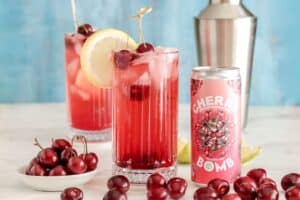For a beer to be considered "craft", it needs to fulfil certain categories: It needs to use quality ingredients and is often brewed using traditional methods; it is not corporately owned and there is a limit to the amount of beer it can produce in a year.

But how did craft beer suddenly appear on our shelves and in our bottle stores?
In the United States, Prohibition reigned supreme between 1920 and 1933. This made it illegal to produce, transport or sell liquor. During this time, breweries died out almost completely. It is said that only 50 breweries survived prohibition. When prohibition lifted, only the largest breweries that brewed bland, mainstream, light lagers survived.
The craft brewer all but died. The seventies saw a surge in home brewers as people began making beers they could no longer buy. This is where the modern craft beer revolution started, although it would take a while to reach South Africa.
The current revival is attributed to the open-share attitude of these brewers. As they began collaborating and sharing tips and techniques, they began creating flavours and aromas never before associated with beer. These interesting and unique brews became known as “craft beers”, as the brewers “crafted” the different ales and lagers.
As craft beer gained popularity, a new, infectious culture began to emerge. Some would say that the craft beer culture of supporting the underdog, experimenting and thinking out-of-the-box and learning how to do things and make things for oneself has been as popular as the beer itself. People who originally didn’t think of themselves as beer-drinkers have been tempted to try craft beer because of the culture associated with drinking it.
As craft beer grew in the US, it became more popular on the continent as well. While UK brewers are slowly catching up, the US still hosts the most micro-brewers and offers the widest array of craft beers. Brewers in Europe are following suit by imitating these American brewers.
“We very much wanted to put our own spin on the beers, inspired by the US scene”, says James Watt, head of stuff at Brewdog, a popular Scottish brewery that was founded in 2007.
“It was more this irreverence and pioneering spirit we wanted to follow as opposed to specific beer styles.”
The craft beer revolution in South Africa began a few years ago, but rapidly expanded in 2012/2013 as micro-breweries began springing up far and wide. Restaurants who previously stocked only the big brand names on tap are now ordering Darling Brew or cases of &Union each month.
“The key to appreciating craft beer is being educated in what to expect from it”, says Rob Heyns, founder of the leagueofbeers.com. “Once people know the possible flavours and methods of brewing craft beer, they can start looking for a beer that suits their personality, lifestyle and palate.”
While the craft beer revolution may have begun only as a trend, it has entrenched itself as a culture and way of thinking. This indicates that craft beer is here to stay in South Africa and around the world.






